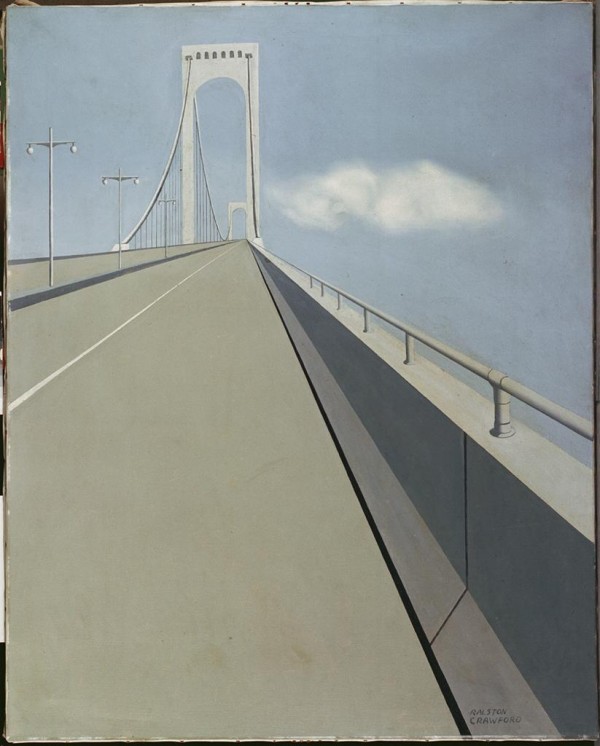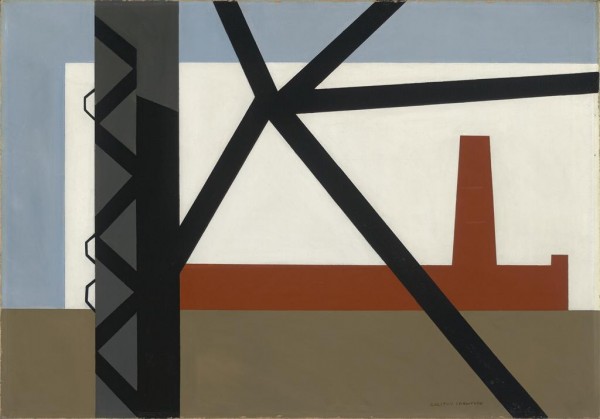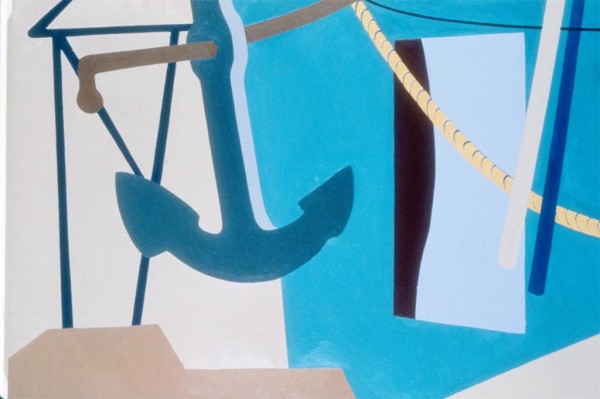Ralston Crawford
Friday, 16 August 2013




From top to bottom: Whitestone Bridge (1939), Boat and Grain Elevators No. 2 (1942), From the Bridge (1942), Nassau #5 (1963-1967)
“Painter, printmaker, and photographer Ralston Crawford created both abstract compositions and representational images characterized by precision, clarity, and rational geometry. Crawford spent his youth in Buffalo, New York and often accompanied his father, a ship’s captain, on travels on the Great Lakes. He studied art at the Otis Art Institute in Los Angeles and worked at the Walt Disney Studio before enrolling at the Pennsylvania Academy of the Fine Arts in Philadelphia. In 1932-33, he attended two academy schools in Paris. Thereafter, he was based in New York City, but traveled frequently to teach at institutions throughout the United States.
In the 1930s, Crawford perfected a stripped-down, ascetic style associated with the movement known as precisionism for its hard-edged linear emphasis, invisible brushwork and smooth surfaces, and dispassionate approach. Drawn to the subject of the sea, he also focused on industrial structures, which he rendered in terms of their pure geometry, as worthy aesthetic objects. Toward the end of the decade, Crawford began to discard the semblance of representation, using objective form as the basis for abstract arrangements of shapes, lines, and colors. The increasingly geometric approach he took in the late 1940s seemed at odds with the then-rising movement known as abstract expressionism, which privileged tactile evidence of the artist’s emotional response and rapid process. However, Crawford regarded his own seemingly controlled, rational work as deeply reflective of emotional experience.
In the mid-1930s Crawford took up photography. He made his first lithograph in 1940 but did not begin printmaking seriously until 1949, when he embarked on a decade of creative experimentation in the medium of lithography. Profoundly affected by the devastation of World War II and his experience as a witness of the atomic bomb test at Bikini Atoll in the Pacific in 1946, Crawford turned to expressively jagged lines and strong color contrasts in works that continued to bear the impress of precisionism’s clean edges and self-effacing smooth surfaces. Following the first of many visits to New Orleans, he used the inspiration of its jazz music to create vivid images of the life of its ordinary inhabitants. Crawford often used photographs and earlier paintings as the basis for prints. His first solo show, in 1934, was followed by many more, including a retrospective exhibition at New York’s Whitney Museum of American Art in 1985. Largely neglected by critics in his day, Crawford increasingly is recognized as an inspired practitioner of mid-twentieth-century modernism.”
-The Terra Foundation for American Art